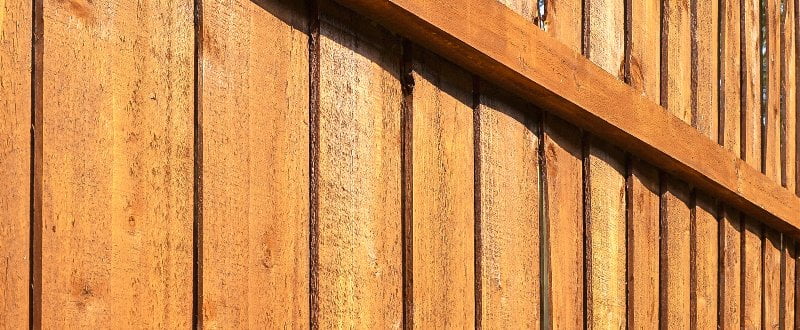
Spring is finally in the air, and after everything that’s gone on recently, it can’t come a moment too soon! With restrictions due to ease in the coming weeks, the law will finally allow larger groups to meet in outdoor spaces, so it’s likely that you’re looking forward to spending some time relaxing out in your garden again – especially if you’re planning on having a few visitors.
Before that time comes though, you’ll want to get your entire garden looking ship-shape again, and that includes your garden fence panels. That’s where we can help here at Welch Fencing – here are just a few of our suggestions on how you can get some life back into your outdoor space.
Take a moment to have a look at your fence
This might sound like a very obvious place to start, but when we say take a look at it, we don’t just mean give it a quick once over in a few seconds. Give yourself at least a few minutes to properly examine it – if there are any problems that jump out at you, what are your options for fixing them? Certain cleaning solutions (like power washing) might not be automatically best for all dirty fence panels, and not every broken board needs replacing entirely. It’s not always a good idea to default to the solution that just seems the easiest or the most convenient – just because they’re easy doesn’t mean they’re guaranteed to bring you long-term results!
Clean any dirty wooden fencing panels
Now, you may have heard from other sources that power washing your fence is the best way to get some of the worst dirt and grime from your fence panels. But personally here at Welch Fencing, we’d advise exercising extreme caution with this approach. Having it on too high a setting means that it can easily start to gouge wood out of your fence – and the trouble is that it can be difficult to identify the highest permissible setting until the damage has already been done.
Happily, there are alternatives. You can use a wire brush to remove the worst of the surface dirt and grime. Then, you can take a bucket and use a mixture of two parts water and one part bleach, and then give the dirtiest parts of the fence a good scrub down. Just be very careful with the mixture, as it can obviously have a serious impact on the flora and fauna in your garden.
Fixing (or replacing) broken panels
We know that when it comes to broken panels, it might seem like the easiest solution is just to replace them entirely, but you might not have to. In fact, as long as the weather is clear, you might be able to glue any split and broken pieces back together provided the wood is totally dry and free from rot.
Obviously, either way, you’ll have to first remove the affected fence panel. Make sure to wear protective gloves when doing this, so you can protect yourself from potentially painful splinters. If your fence panel has been secured with U-shaped fence clips, then it’s a fairly straightforward matter to simply unscrew the clips from the panel before lifting the panel out.
If it’s been nailed in on the other hand, you’ll generally find that cutting through these nails with a hacksaw is the easiest way to get the panel out. You can then use a claw hammer to knock in the remaining ends of the nails into the fence panel, or remove them entirely – either with the hammer, or a pair of combination pliers.
Once the fence panel is out, make sure that you’re applying the right kind of specialised glue to fix the two pieces back together. You can either tape or clamp these pieces together while the glue dries, before replacing the panel.
Of course, if the fence panel is rotting (generally easy to spot, since one of the symptoms is that the wood becomes soft to the touch), then the fence panel will need to be replaced entirely. There’s no glue that can fix that, unfortunately!
Restore your wooden fencing panels by re-staining them
With wooden fences you’ll generally find that the elements can start to take their toll, especially after two to three years. Or you might have accidentally damaged the wood by being a bit too zealous with a power washer at some point in the past – don’t worry, you’re far from the only one!
Whatever the case, re-staining your fence is an excellent way to give your fence panels a fresh lease of life. You’ll need to be very selective with the type of stain you choose, to ensure that it’s compatible with the kind of colour that you want for it. Before you start, it’s also worth double checking one last time that you’re properly equipped – there’s nothing worse than getting halfway through a job only to find that you’re missing a crucial tool or material.
Speaking of tools, sprayers and rollers are both understandably popular options when it comes to fences, as they’re well-suited to covering a wide area in a relatively short period of time. However, it’s a good idea to have a smaller brush on hand anyway, as you’ll need it to get into those small or awkward gaps.
One last thing – it’s always a good idea to apply the stain to a small, out-of-the-way area first, so you can see what it looks like before you get started in earnest.
And if your Spring clean drive means you need any replacement garden fence panels, you’re in exactly the right place. Here at Welch Fencing we’ve got a great range of these and concrete fence posts for you to browse right here on our site. As an experienced UK manufacturer of concrete fence posts and garden fence panels, we have our very own fleet of delivery vehicles at our disposal, allowing us to get your products right to your door.
If you have any questions about any of our products, or you need any more detailed information, feel free to contact us on 01772 336 476, or fire us a quick email on sales@garden-fence-panels.co.uk.




